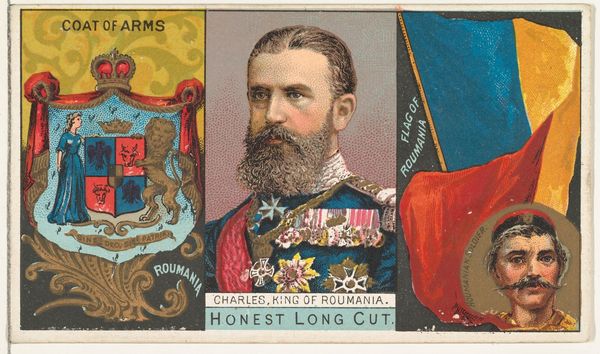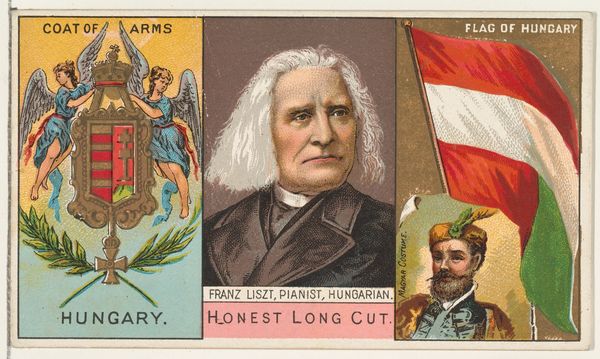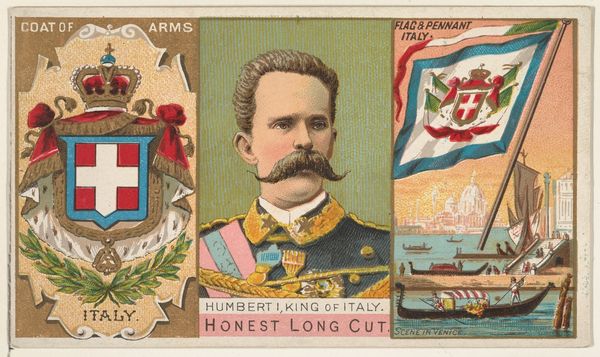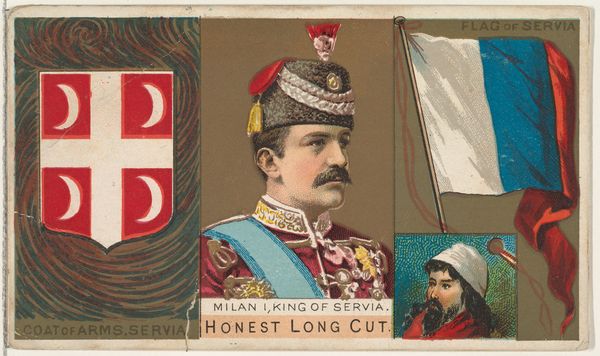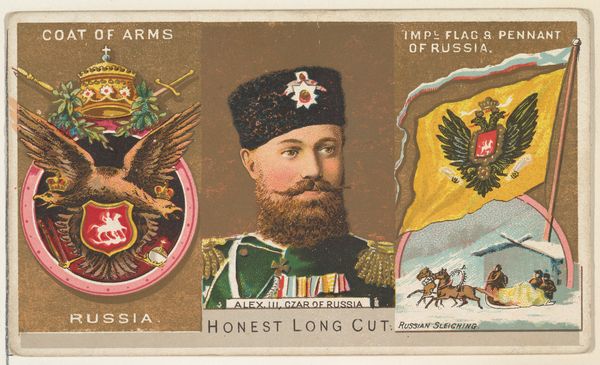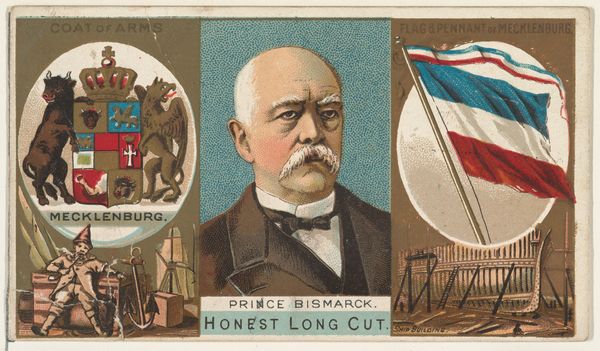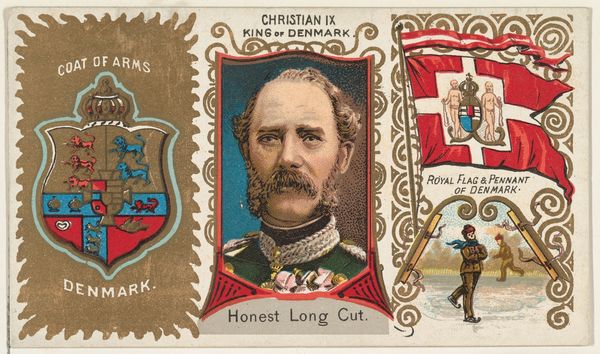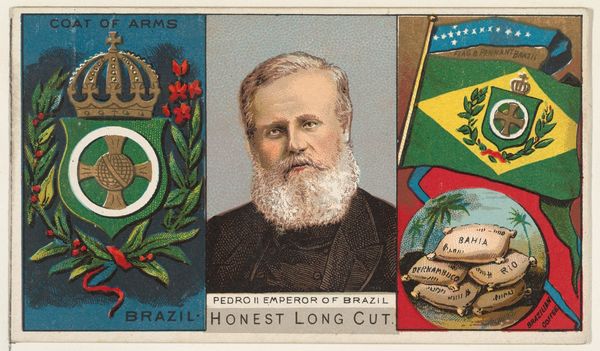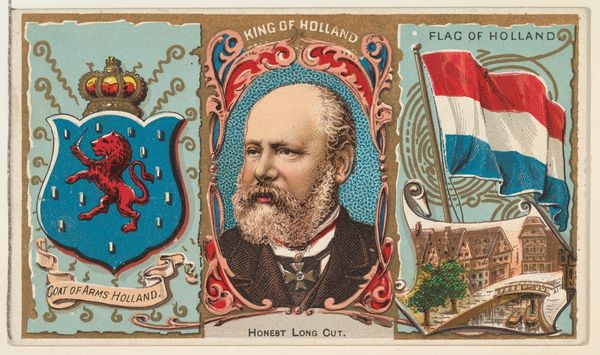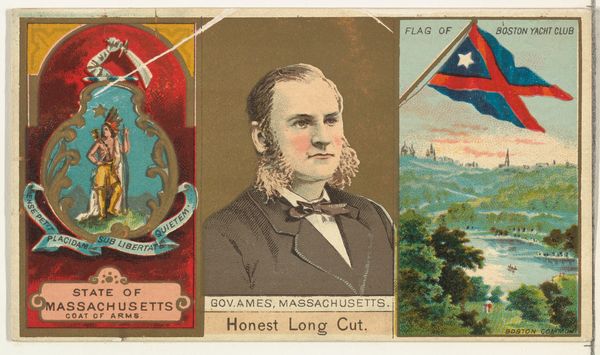
General Salomon, President of Haiti, from the Rulers, Flags, and Coats of Arms series (N126-1) issued by W. Duke, Sons & Co. 1888
0:00
0:00
drawing, lithograph, print
#
portrait
#
drawing
#
lithograph
# print
#
figuration
#
orientalism
#
academic-art
#
miniature
Dimensions: Sheet: 2 1/2 × 4 5/16 in. (6.4 × 11 cm)
Copyright: Public Domain
Editor: This is an 1888 lithograph print titled "General Salomon, President of Haiti" from the Rulers, Flags, and Coats of Arms series by W. Duke, Sons & Co. It's surprisingly busy for such a small piece, almost like a collage, what with the portrait, flag, coat of arms, and even a miniature sugar field! How do you read this piece as a whole? Curator: The visual organization is intriguing. Notice how the composition is compartmentalized, dividing the imagery into discrete zones. We have the symbolic space of the coat of arms, the representational space of the portrait, the national space of the flag, and then the space of industry represented by the sugar field. Consider the chromatic harmony and contrast between the flag of Haiti and coat of arms which echo and offset. What does that say about how they wanted it viewed? Editor: That's a great point. The compartmentalization really jumps out now, especially since the colors don’t exactly bleed into one another. It keeps each segment separate. Could this fragmentation reflect a tension, maybe between national identity and the lived realities depicted in the "Sugar Field" vignette? Curator: Precisely! Or consider how the artist integrated geometric order and emblematic display; look closely at how General Salomon's face seems smoothed, a mask almost. The intent might have been idealization but arguably produces a flattened, decorative effect. We are pushed to think about how reality can be reshaped when it is being presented and to whom it may be presented to. Editor: It’s like they are elevating him to some ideal through these formalized pictorial elements, at the cost of any true realism or individual detail. Curator: Indeed, which makes us consider whether a true portrait would allow a space for colonial interests in it. Editor: This really highlights how form and structure aren't just about aesthetics; they actively shape meaning. I'll never look at these old tobacco cards the same way again!
Comments
No comments
Be the first to comment and join the conversation on the ultimate creative platform.
